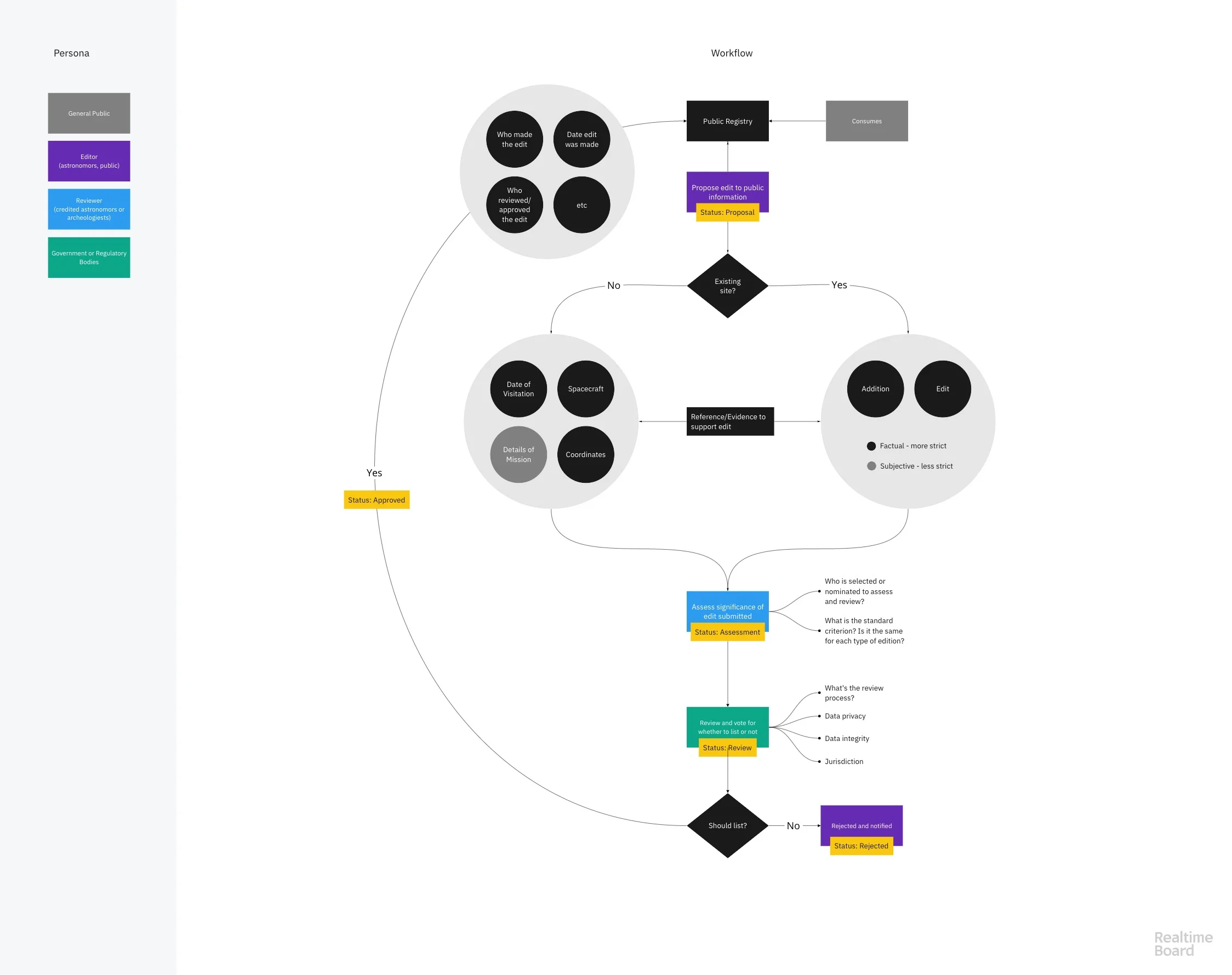Human Heritage on the Moon
For All Moonkind has an ambition — to educate the public about the human heritage on the moon by creating an online registry that archives moon landing related artifacts that are approved by archeologists and space scientists.
—
Role: Strategy / Design
Collaborate with: Founder / Technical Lead / Project Manager / Archaeologists and Space Scientists
—
Getting Public Recognition
One of the primary mission of For All Moonkind is to get the public enthusiastic again about our space missions globally and throughout history.
To achieve this goal, I was commissioned to design a set of high fidelity mockups for a public-facing web pages that will make people excited about moon landing sites.
Visual Research
I gathered inspirations with elements that may be of visual interests when planning for the design, since I know that the goal for this set of mockup is more about public promotion, therefore it’s more important to produce something that’s visually impactful.
Visual Identity
The visual identity is kept minimum with a sci-fi look and feel with light on dark elements.
Telling a Story
Although the primary function of the registry site is to be catalogue all artifacts from the global moon landing sites, storytelling may be the best way to get people excited about the space missions.
When presented at an UN conference, it was very positively received.
(The data presented on the set of mockups is not accurate, and is meant to be placeholders.)
A Rigorous Review Process
The working group that consists of archeologists and space scientists are very concerned about the dignity and accuracy of the data being stored and presented on the registry. Unlike Wikipedia, where crowdsource editing is encouraged, the working group wanted a very rigorous review process that consists all the essential steps to ensure both the data and metadata are recorded accurately.
The flowchart of what the process of the submitting, reviewing, and approving data related to a moon landing artifact to be recorded in the registry.
Data Structure
Internally, we had to structure the data to develop the archive. To approach this, I looked at museum websites and online archives, and came up with a basic structure.
A Review Dashboard
A Review Dashboard is what accredited scientists of the registry have access to, in order to manage their review and approval process of data entry into the registry.
Previously, when presenting the design to the scientists from the working group, it wasn’t immediately clear that the design is not meant to be accurate or finished—instead, it is a visual representation of what the final product could be, and a visual cue to get their responses and feedback in order to move on to our design and development next stages.
Ideally, I would rather run some participatory design working session with the scientists to understand their expertise, concerns, and preferences. However, it is quite challenging to get much time with the scientists, we had to be as strategic and careful as we could to explain the design when we did get a chance to present to them.
To even better clarify the design, so that the scientists don’t get sidetracked by placeholder texts, I annotated each elements on the dashboard.
Next Steps
This project is still ongoing. The next step for design is to sketch out the entire review flow that is intuitive and can ensure data accuracy and dignity during the review process.



